Email Marketing
Is Email Marketing Dying
Some say email marketing is dying, but the truth might just surprise you – find out why in this insightful analysis.

Many of us have come across whispers claiming that email marketing’s days are numbered, but is that truly the case? Considering the prominence of social media and various other digital marketing platforms, it’s understandable to speculate that email’s significance might be waning.
However, before we jump to conclusions, let's take a closer look at the data and trends shaping the future of email marketing. There's more to this story than meets the eye, and the evidence might just surprise you.
Key Takeaways
- Email marketing remains a crucial channel for reaching targeted customers.
- Email marketing has 66% more conversions than any other channel.
- Personalization and engaging content drive higher open and click-through rates.
- Email marketing continues to adapt and thrive, making it a crucial component of any comprehensive digital marketing strategy.
The Evolution of Email Marketing
The Evolution of Email Marketing has been shaped by the rapid advancements in technology and the changing behavior of consumers, making it imperative for marketers to adapt their strategies accordingly.
Email marketing, despite its age, continues to thrive as a crucial channel for reaching targeted customers. With over 5.5 billion email accounts worldwide and 92% of online adults using email, its effectiveness for acquiring new customers surpasses that of Facebook or Twitter by over 40 times. Moreover, it boasts 66% more conversions than any other channel, emphasizing its importance in the marketing mix.
The evolution of email marketing has adapted to changes in technology and user behavior. Personalization has become a key priority, and integrating it with other digital marketing strategies has become essential for overall campaign effectiveness. As we look to the future, AI and machine learning advancements offer potential for hyper-personalized content and automation. Thus, it's crucial for email marketers to stay abreast of technological advancements and continuously adapt their strategies to remain competitive.
Despite challenges such as spam filters and GDPR compliance, email marketing continues to be relevant and important, providing a high return on investment (ROI), direct communication with the audience, and the ability to build trust and loyalty. Therefore, understanding the evolution of email marketing is vital for marketers to capitalize on its continued effectiveness.
Common Misconceptions

Frequently overlooked, misconceptions about email marketing can hinder businesses' success and impact their ability to effectively engage with their audience. Despite the misconception that email marketing is dead, it remains a powerful tool for businesses. Ignoring this valuable channel can result in missed opportunities to reach and engage with potential and existing customers.
Personalization and engaging content are key factors in driving higher open and click-through rates. Contrary to another misconception, ignoring GDPR standards can lead to legal consequences, potentially damaging a business's reputation and trust with subscribers. Additionally, mobile-friendly templates are crucial, as the majority of users access emails on mobile devices. Neglecting this aspect can lead to high bounce rates and reduced engagement.
Outdated email marketing practices, such as impersonal address lines and disregarding user experience, can significantly impact campaign success. Understanding and dispelling these misconceptions is essential for businesses to leverage the full potential of email marketing and achieve their marketing goals.
Current Challenges
Crafting engaging content and avoiding spam filters are crucial challenges in email marketing, requiring continuous learning and adaptation to keep campaigns effective.
In today's digital landscape, marketers face the ongoing challenge of creating content that resonates with their audience while navigating increasingly stringent spam filters. The implementation of GDPR prompted a shift in marketing strategies, emphasizing the importance of obtaining consent and building more targeted and engaged audiences.
Personalization has emerged as a potent tool in email marketing, fostering higher engagement and conversion rates. Integrating email with other digital marketing strategies amplifies the overall effectiveness of campaigns, creating a cohesive and impactful brand presence.
Embracing technological advancements, such as AI, is essential for staying ahead in the email marketing realm. As the landscape continues to evolve, staying abreast of current trends, regulations, and best practices is paramount for success in email marketing.
Strengths and Advantages

Utilizing email marketing offers a direct and impactful means of engaging with our audience, fostering trust and loyalty while delivering impressive click-through rates and a high return on investment.
With an average open rate of 20.81% across all industries, email marketing allows for direct communication with our audience. This fosters a sense of trust and reliability, as consumers look forward to receiving marketing emails, with 61% welcoming them at least once a week.
Moreover, email campaigns have 6 times higher click-through rates compared to tweets, highlighting their effectiveness in engaging audiences. This indicates that our audience isn't only accepting but also engaging with the content we deliver through email.
Additionally, email marketing delivers a high ROI, with a $44 return for every dollar spent, showcasing its cost-effectiveness and efficiency. The consistency in quality results compared to other marketing channels underlines its reliability and potential for success.
These strengths and advantages position email marketing as a powerful tool for directly engaging our audience, fostering trust and loyalty, and delivering significant returns on our marketing investment.
Integration With Other Strategies

By integrating email with other digital marketing strategies, we can amplify the overall effectiveness of our campaigns and maximize engagement with our audience. This integration allows us to create a cohesive and immersive brand experience across different channels, reinforcing our messaging and increasing the likelihood of conversion.
Here are three key ways in which integrating email with other digital marketing strategies can significantly benefit our campaigns:
- Boosting Engagement: Utilizing email to follow up on a social media campaign can significantly boost engagement and reinforce the messaging conveyed through social platforms.
- Informed Content Enhancement: Insights from social media management tools and website analytics can inform and enhance email content, ensuring that our messages are tailored to the preferences and behaviors of our audience.
- Refined Optimization: Cross-channel data utilization enables us to refine and optimize our email strategies for better performance, leveraging the strengths of each channel to maximize the impact of our campaigns.
Impact of Social Media

Social media's influence on consumer behavior is undeniable. 54% of social browsers use platforms to research products. This shift in behavior also impacts email engagement trends. Consumers now expect personalized, relevant content across all channels, including email. Therefore, understanding the impact of social media on consumer behavior is crucial. It is essential for adapting email marketing strategies to meet evolving consumer expectations and maximize campaign effectiveness.
Social Media's Influence
With over 5.5 billion email accounts in use worldwide and a majority of email users spending significant time browsing marketing emails each week, the influence of social media on email marketing can't be underestimated.
Social media has a massive impact, as it complements email marketing efforts by providing opportunities for cross-promotion and engagement with a wider audience.
Email marketing remains highly effective, delivering a high ROI and driving more conversions than any other channel, including social media.
Integrating email with other digital marketing strategies, including social media, amplifies overall campaign effectiveness and allows for a more cohesive and personalized customer experience.
As such, social media's influence on email marketing isn't about overshadowing its effectiveness but rather enhancing and complementing its impact.
Changing Consumer Behavior
Changing consumer behavior due to the impact of social media has significantly influenced the effectiveness and relevance of email marketing in today's digital landscape. As seen in the table below, over 5.5 billion email accounts are in use worldwide, indicating the continued importance of email in communication. Integrating email with other digital marketing strategies amplifies overall campaign effectiveness, demonstrating the adaptability of email marketing in response to changing consumer behavior. Despite the rise of social media, email consistently delivers quality results compared to other marketing channels. The future of email marketing involves embracing technological advancements such as AI and machine learning for hyper-personalized content. Thus, marketing emails remain an effective tool for nurturing relationships with prospects and customers, allowing for personalized and targeted communication.
| Facts | Impact |
|---|---|
| Over 5.5 billion email accounts in use worldwide | Email remains a vital communication tool |
| Integrating email with other digital marketing strategies | Amplifies overall campaign effectiveness |
| Email consistently delivers quality results | Compared to other marketing channels |
Email Engagement Trends
Email engagement trends reflect the evolving impact of social media on digital communication strategies.
1) Social media integration: Marketers are leveraging social media to enhance email engagement, using platforms like Facebook, Instagram, and Twitter to promote email content and drive traffic.
2) Interactive content: Engaging email content, such as polls, quizzes, and user-generated content, is gaining popularity, creating a two-way communication channel and increasing email open rates.
3) Omnichannel approach: Email marketing is being integrated with social media, mobile apps, and other digital channels, providing a cohesive customer experience and boosting overall engagement.
As social media continues to shape consumer behavior, email marketers must adapt by embracing these trends to maximize engagement and ROI.
Email Vs. Other Channels
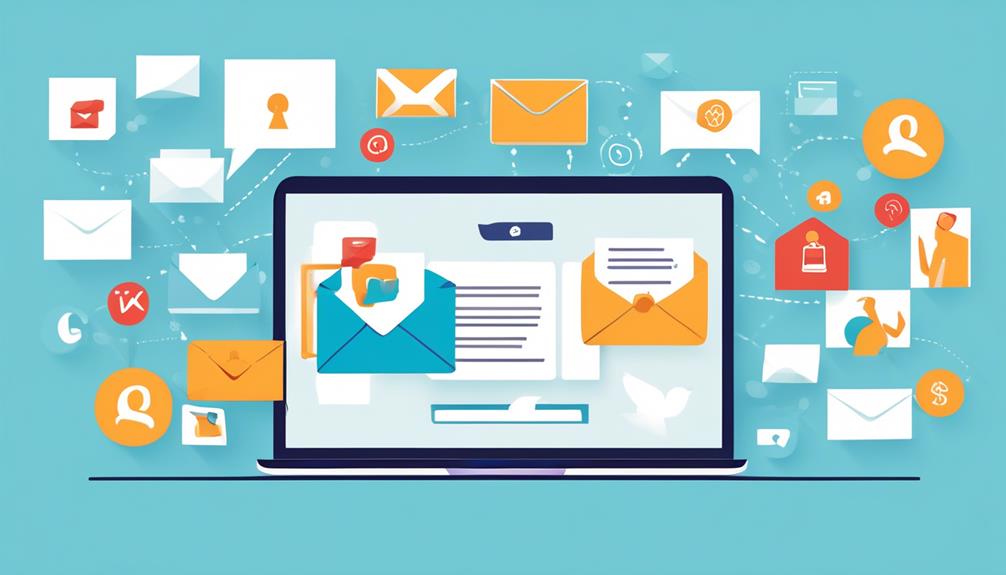
Email marketing has proven its effectiveness time and time again, especially when compared to other channels. The data speaks for itself – with higher acquisition success, ROI, and conversion rates, email stands out as a powerful marketing tool.
As we consider the future of email, it's clear that advancements in AI and machine learning will only enhance its potential for delivering hyper-personalized content and maintaining its effectiveness in the evolving digital landscape.
Email Effectiveness Compared
With over 5.5 billion global accounts and a demonstrated 81% acquisition success rate, email marketing outperforms other channels in reaching and acquiring new customers. When comparing email effectiveness to other marketing channels, consider the following:
- Wider Reach: Email has a wider reach with over 5.5 billion accounts globally, compared to social media profiles.
- Higher Acquisition Success: 81% of retail professionals consider email marketing effective for acquiring new customers, showcasing its effectiveness.
- Engagement Rates: Email campaigns have six times higher click-through rates compared to tweets, demonstrating their ability to engage audiences effectively.
These facts highlight the unmatched effectiveness of email marketing in customer acquisition and engagement, making it a crucial component of any marketing strategy.
As the debate on 'Email Marketing Dead' continues, the data clearly supports the enduring power of email automation in today's digital landscape.
Other Channel Performance
In today's digital landscape, the performance of email marketing stands out when compared to other channels, with its higher delivery rate, acquisition effectiveness, and engagement potential.
Email marketing boasts a delivery rate of 90% to the intended inbox, far surpassing the mere 2% of a company's Facebook followers who see their posts.
Retail professionals consider email marketing 40 times more effective for acquiring new customers than Facebook or Twitter. Additionally, it drives 6 times higher click-through rates compared to tweets, making it an effective channel for engagement.
With a high ROI of $44 for every dollar spent and its ability to generate the most ROI for over half of marketers' companies, email marketing continues to showcase superior performance compared to other marketing channels.
Integrating email with other digital marketing strategies further amplifies overall campaign effectiveness.
Future of Email
Amidst the evolving landscape of digital marketing channels, the future of email marketing presents a compelling case for its enduring relevance and strategic significance.
1) Email marketing continues to thrive with high ROI figures and engagement rates, making it an essential channel.
2) Integrating email with other digital marketing strategies amplifies overall campaign effectiveness and boosts engagement.
3) AI and machine learning advancements offer potential for hyper-personalized content, emphasizing the need to stay abreast of technological advancements.
As technology advances, email marketing is still the most preferred marketing channel for consumers, delivering the highest ROI of all marketing channels. It's evident that email marketing is far from dying; instead, it continues to adapt and thrive, making it a crucial component of any comprehensive digital marketing strategy.
The Future Outlook

Embracing technological advancements such as AI and machine learning will be pivotal in shaping the future of email marketing, enabling hyper-personalized content and automation for enhanced engagement and ROI. As we look ahead, it's evident that email marketing will continue to evolve and remain a cornerstone of successful marketing strategies. The table below illustrates the enduring effectiveness of email marketing and its high ROI compared to other channels.
| Aspect | Email Marketing |
|---|---|
| Acquisition of Customers | Highly effective in acquiring new customers and driving conversions |
| Return on Investment | High ROI compared to other marketing channels, showcasing its financial benefits |
| Personalization | Integration of AI and machine learning for hyper-personalized content |
The future outlook for email marketing is promising, especially when considering its direct communication with the audience, ability to build trust and loyalty, and its integration with other digital marketing strategies to boost overall campaign effectiveness. Therefore, it's clear that email marketing is not dying; on the contrary, it continues to thrive and adapt, ensuring its relevance in the ever-changing landscape of digital marketing.
Effective Practices

Utilizing advanced targeting techniques and personalized content, effective email marketing practices consistently drive high engagement and conversions, making it a pivotal component of successful marketing strategies.
To ensure the most effective email marketing practices, we recommend the following:
- Leverage Email Marketing Tools: Embrace sophisticated email marketing tools such as Campaign Monitor to optimize your campaigns, personalize content, and automate processes, ensuring that your emails are delivered at the right time to the right audience.
- Prioritize Personalization: Tailoring content to individual preferences and behaviors increases engagement and conversions. Personalized subject lines and product recommendations can significantly enhance the impact of your emails.
- Integrate with Other Marketing Strategies: Email marketing shouldn't exist in a silo. Integrating it with other digital marketing efforts such as social media, content marketing, and customer relationship management (CRM) can amplify its effectiveness and impact.
Key Metrics and Analytics
Analyzing key metrics and analytics is essential for evaluating the effectiveness of email marketing campaigns and optimizing their impact on engagement and conversions. To truly gauge the success of our efforts, we must delve into the data provided by key metrics such as open rate, click-through rate (CTR), conversion rate, bounce rate, and subscriber growth rate. These metrics offer valuable insights into the performance of our email marketing campaigns, enabling us to make informed decisions and drive strategic improvements.
| Key Metrics | Description |
|---|---|
| Open Rate | Percentage of recipients who opened the email, indicating initial engagement with the content. |
| Click-Through Rate | Percentage of recipients who clicked on a link within the email, showing interest in the content. |
| Conversion Rate | Percentage of recipients who completed a desired action, providing insight into the effectiveness of the email. |
| Bounce Rate | Percentage of emails that were not delivered successfully, indicating potential issues with the email list. |
| Subscriber Growth Rate | Rate at which your email list is growing, reflecting the success of your email marketing efforts. |
Engaging Your Audience

We need to focus on engaging our audience through strategic content creation and interactive campaigns.
By providing ongoing value and personalizing our emails, we can ensure that our audience remains interested and engaged.
It's also crucial to collect and respect audience preferences while prioritizing mobile optimization to enhance their experience.
Audience Engagement Strategies
To effectively engage your audience, focus on providing ongoing value to customers to keep them connected with your brand. Here are three key audience engagement strategies for email marketing:
- Prioritize Personalization: Tailor content and use triggered nurturing to create a more personalized experience for your audience. Personalization enhances relevance and resonates with your subscribers, leading to higher engagement and conversions.
- Measure and Optimize Performance: Use key performance indicators (KPIs) such as conversions and click-through rates to measure and optimize email performance. Data-driven insights enable continuous improvement and refinement of your email marketing strategies.
- Integrate with Other Strategies: Integrate email with other digital marketing strategies to amplify overall campaign effectiveness and engagement. A cohesive approach across channels reinforces brand messaging and enhances the customer experience.
Embracing these strategies will drive meaningful engagement and results in your email marketing campaigns.
Personalized Content Creation
Leveraging personalized content creation in email marketing significantly enhances audience engagement and drives better results. By tailoring content to specific audience segments, we can build stronger relationships and increase conversion rates. Personalization enhances the relevance and value of email content, leading to higher open and click-through rates. Understanding audience needs and interests is crucial for creating resonant personalized content. It's a key strategy for maximizing the effectiveness of email marketing campaigns.
| Benefits of Personalized Content Creation |
|---|
| Builds stronger relationships |
| Increases conversion rates |
| Enhances relevance and value |
| Drives higher open and click-through rates |
| Maximizes the effectiveness of email marketing campaigns |
Personalized content creation is not only a strategy but a necessity in today's email marketing landscape. It's the gateway to capturing audience attention and achieving better results.
Interactive Email Campaigns
Enhancing email engagement through interactive campaigns is a strategic method to captivate audiences and gather valuable feedback.
Interactive email campaigns allow for increased engagement by incorporating elements such as quizzes, surveys, and polls directly within the email. By utilizing interactive email campaigns, you can encourage audience participation and gather valuable feedback or data through embedded forms and interactive elements.
Incorporating interactive elements like image carousels, accordions, or videos within your email campaigns can captivate your audience and provide a more immersive experience.
Leveraging interactive email campaigns can help you stand out in crowded inboxes, as they offer a unique and engaging way to communicate with your audience.
This data-driven approach to email marketing ensures that your campaigns aren't only seen but also actively interacted with, leading to higher conversion rates.
Does the Length of Marketing Emails Impact Their Effectiveness in the Age of Email Marketing Decline?
In the age of email marketing decline, the ideal length for marketing emails is a critical consideration. Shorter, concise emails tend to perform better, with a higher open and click-through rate. However, it ultimately depends on the audience and the content. Testing different lengths is key to finding the right balance.
Frequently Asked Questions
Is Email Marketing on the Decline?
Email marketing isn't on the decline. Our data-driven analysis shows that it remains a vital tool in reaching and engaging targeted customers. With a wide reach and high return on investment, it consistently outperforms other channels.
Evolving to meet technological changes and user behavior, it has adapted to remain effective and cost-efficient. Despite challenges, it continues to build trust, loyalty, and drive higher engagement and conversion rates.
Is Email Marketing Still Effective 2023?
Absolutely, email marketing remains a highly effective strategy in 2023. With a proven track record of driving conversions and delivering a high ROI, it continues to be a valuable channel for acquiring new customers.
The accessibility, reliability, and potential for hyper-personalized content through AI advancements solidify its relevance.
Integrating it with other digital marketing strategies amplifies overall campaign effectiveness, making it a crucial component of a comprehensive marketing approach.
Is There a Future for Email Marketing?
Absolutely, there's a future for email marketing. It remains a vital tool for customer acquisition and engagement, with high ROI and widespread user adoption.
Our team believes in leveraging advanced AI and personalization to adapt to changing consumer preferences, ensuring ongoing value for customers.
The strategic use of email marketing, supported by data-driven insights, will continue to drive success for businesses and marketers in the ever-evolving digital landscape.
Is Email Being Phased Out?
Email isn't being phased out. It remains a crucial part of our marketing strategy. With over 5.5 billion email accounts in use worldwide and a $44 return for every dollar spent, email marketing delivers exceptional results. We consistently see higher click-through rates and more conversions compared to other channels.
Integrating email with other digital strategies amplifies our overall campaign effectiveness. The future of email marketing lies in AI advancements, offering potential for hyper-personalized content.
Conclusion
In conclusion, email marketing is definitely on its last legs, just like how social media was supposed to replace it. With its high ROI, engagement rates, and effectiveness in acquiring new customers, it's clear that email marketing is on life support.
So, let's just ignore the 5.5 billion email accounts and the higher click-through rates, because who needs all that when we can just rely on the next big thing that's totally going to replace email, right?
Bryn – AI Expert Writer Bryn is the wizard of words and AI at Influenctor. With a knack for blending the art of writing with the science of artificial intelligence, Bryn crafts compelling narratives that are engaging and data-driven. Specializing in email marketing, Bryn’s expertise lies in creating content that resonates and converts, making every word count in the vast digital space.
Email Subject Line
Fundraising Email Subject Lines
Crafting compelling subject lines for fundraising emails can be the key to unlocking donor engagement – want to know how?
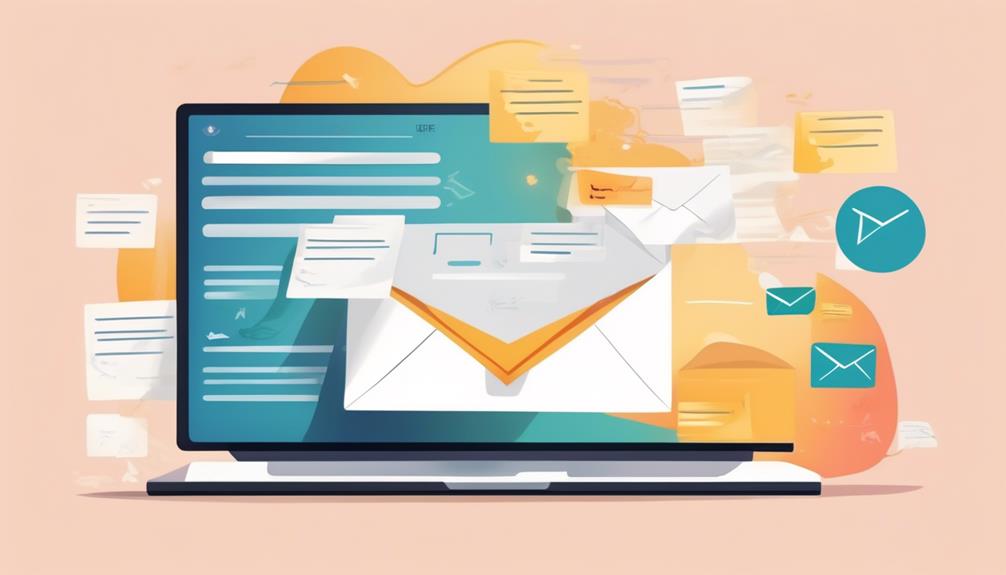
It’s universally acknowledged that capturing our donors’ attention through email is essential. The success of our fundraising campaigns largely depends on our ability to master the subtle skill of devising subject lines that both intrigue and motivate action.
There's a delicate balance to strike, and it's a challenge we all face. But fear not, there are proven strategies and best practices that can help us navigate this terrain and make our fundraising emails stand out in a crowded inbox.
Interested in learning how to master this essential skill and maximize the impact of your fundraising campaigns?
Key Takeaways
- Compelling subject lines are important for increasing email open rates and prompting immediate engagement.
- Personalization in subject lines, such as using the recipient's first name or tailoring the subject line to reflect their interests, can create an intimate connection with the reader and increase the likelihood of the email being opened.
- Incorporating mission impact and outcomes in subject lines can generate interest, captivate the reader, and increase email open rates.
- Best practices for email open rates include using short subject lines, incorporating actionable language, personalizing subject lines for individual connection, and including numbers or statistics to pique curiosity.
Crafting Compelling Subject Lines
Crafting compelling subject lines involves immediately conveying the impact of our mission and elevating specific pain points or captivating statistics. This is crucial in grabbing the reader's attention and increasing email open rates. To achieve this, we must infuse urgency and action verbs into our subject lines to prompt immediate engagement.
Crafting a subject line that communicates a sense of urgency can significantly impact open rates, compelling the reader to take action. Additionally, personalizing subject lines can create a more intimate connection with the reader, increasing the likelihood of them opening the email. Utilizing the recipient's first name or tailoring the subject line to reflect their interests or past interactions can make the reader feel valued and recognized.
Furthermore, incorporating the mission's impact and the specific outcomes of donations into subject line ideas can generate interest and curiosity. By providing a glimpse of the content through the preview text and using emotionally powerful statements, we can captivate the reader and drive them to open the email.
Effective Fundraising Email Strategies
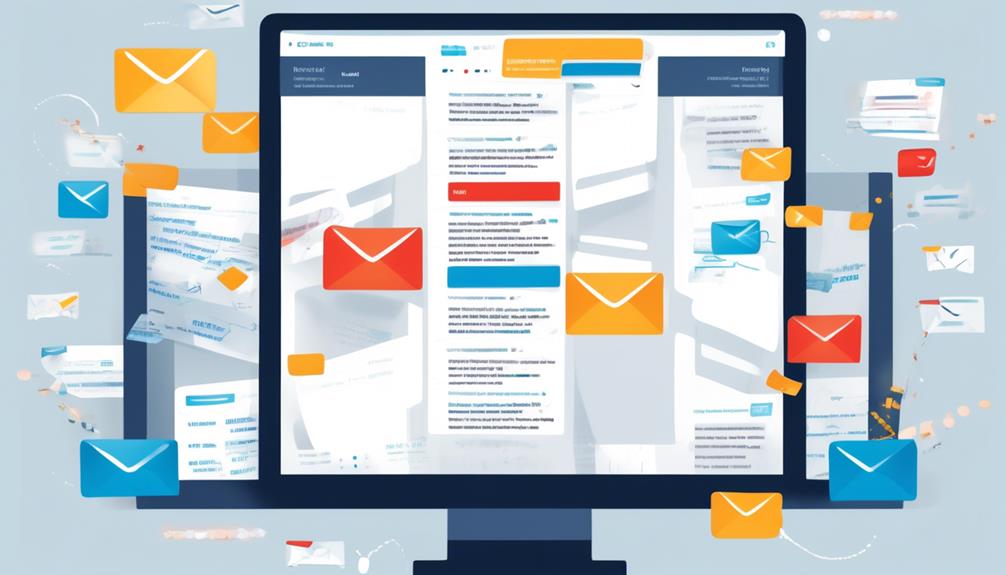
After establishing the importance of compelling subject lines in capturing the reader's attention and increasing email open rates, we can now delve into effective fundraising email strategies. It's crucial to craft emails that not only grab the recipient's attention with compelling subject lines but also prompt them to take action. Here are some effective fundraising email strategies to maximize engagement and encourage donor participation:
| Effective Fundraising Email Strategies |
|---|
| Provide immediate insight into the impact of the mission |
| Elevate a particular pain point or feature a captivating statistic |
| Create a sense of urgency and use words that highlight content significance |
| Personalize subject lines by incorporating the recipient's first name |
| Incentivize the open with fundraising incentives and highlight the community impact |
Best Practices for Email Open Rates
Improving email open rates requires understanding the recipient's perspective and crafting subject lines that resonate with their interests and needs. To achieve this, we must use the best practices for email subject lines.
Short subject lines make a significant impact, as they're more likely to be fully displayed on various devices, making them easily scannable. When it comes to nonprofit fundraising emails, brevity is especially crucial as it allows the recipient to quickly grasp the essence of the message.
Using actionable language can help make subject lines more compelling, prompting recipients to open the email. Additionally, personalization can significantly help in driving open rates. By incorporating the recipient's name or referencing past interactions, we can create a sense of individual connection.
Furthermore, including numbers or statistics in subject lines can pique curiosity and prompt the recipient to open the email. These best practices are essential when writing fundraising email subject lines.
For example, 'Help Us Reach Our Goal: Donate Today' and 'Join Our Cause: Together, We Can Make a Difference' are effective subject line examples that embody these best practices.
Subject Line Personalization Tips

To enhance the effectiveness of fundraising email subject lines, incorporating personalized elements such as the recipient's first name and adjusting the sender name can significantly improve engagement. Personalization creates a sense of individual recognition and connection for email recipients, making them more likely to open your emails.
Addressing potential donors by their first names can make the fundraising email subject line feel more personal and appealing. Additionally, adjusting the sender name to include a familiar or recognizable individual or organization can create a personal conversation with the recipient, increasing the likelihood of them opening the email.
It's important to avoid using all caps in subject lines, as this can come across as aggressive and may deter readers from taking action. A/B testing different subject lines with and without personalized elements can help determine their effectiveness in engaging recipients.
A/B Testing for Email Engagement
When conducting A/B testing for email engagement, we compare two different versions of subject lines to measure their effectiveness in engaging recipients. This method allows us to optimize email engagement by refining subject lines based on audience preferences and ultimately driving better results in fundraising efforts.
Here are some key points to consider when implementing A/B testing for email engagement:
- Identifying Compelling Subject Lines: A/B testing helps in identifying the most compelling subject line by analyzing open rates and click-through rates, enabling organizations to tailor their messaging for maximum impact.
- Avoiding Spam Filters: Through A/B testing, organizations can experiment with variations in subject lines to ensure they don't trigger spam filters, thus increasing the chances of their fundraising emails reaching recipients' inboxes.
- Optimizing Engagement: A/B testing allows for the experimentation and refinement of subject line concepts, leading to increased open and click-through rates, ultimately improving email engagement.
- Personalization and Relevance: A/B testing can also assess the impact of personalizing subject lines, such as including recipients' names, to determine its effect on engagement.
In the realm of email marketing, leveraging A/B testing for subject lines is essential for enhancing engagement and achieving fundraising goals.
Frequently Asked Questions
What Is a Good Subject Line for Fundraising Email?
We've found that a good subject line for a fundraising email is one that is clear, compelling, and personal. It should grab attention, convey urgency, and inspire action. It's important to test and iterate to find what resonates with your audience.
What Are Some Good Subject Lines for Emails?
We've found that compelling subject lines are vital for email engagement. They should be concise, evoke curiosity, and offer value. Embracing urgency, personalization, and gratitude can significantly enhance open rates and foster connections.
What Should the Subject Line Be for a Sponsorship Email?
For a sponsorship email, the subject line should be concise, compelling, and personalized. It should capture the attention of the recipient and clearly communicate the value and impact of the sponsorship opportunity.
How Do You Write a Fundraising Email?
We write fundraising emails by crafting a compelling story, clearly stating our purpose, and making a direct ask. We personalize the message, create urgency, and include a clear call to action to drive engagement.
Conclusion
In conclusion, crafting compelling fundraising email subject lines is like finding the key to unlocking hearts and wallets.
By using urgency, personalization, and value-driven messaging, we can capture the attention of donors and inspire them to take action.
With A/B testing and best practices, we can fine-tune our approach and ultimately increase engagement and revenue for our important causes.
Let's continue to refine our strategies and watch our impact grow.
Erik – Email, SEO, AI Expert Writer Erik is the strategist, the thinker, and the visionary. His role at Influenctor is pivotal in integrating SEO with AI-driven content strategies. With an extensive background in email marketing and a profound understanding of search engine algorithms, Erik develops innovative strategies that elevate our client’s online presence. His work ensures that our content is seen, felt, and remembered.
Email Subject Line
Recruitment Email Subject Lines
Leverage the untapped potential of email subject lines to transform your recruitment strategy and captivate candidates from the get-go.
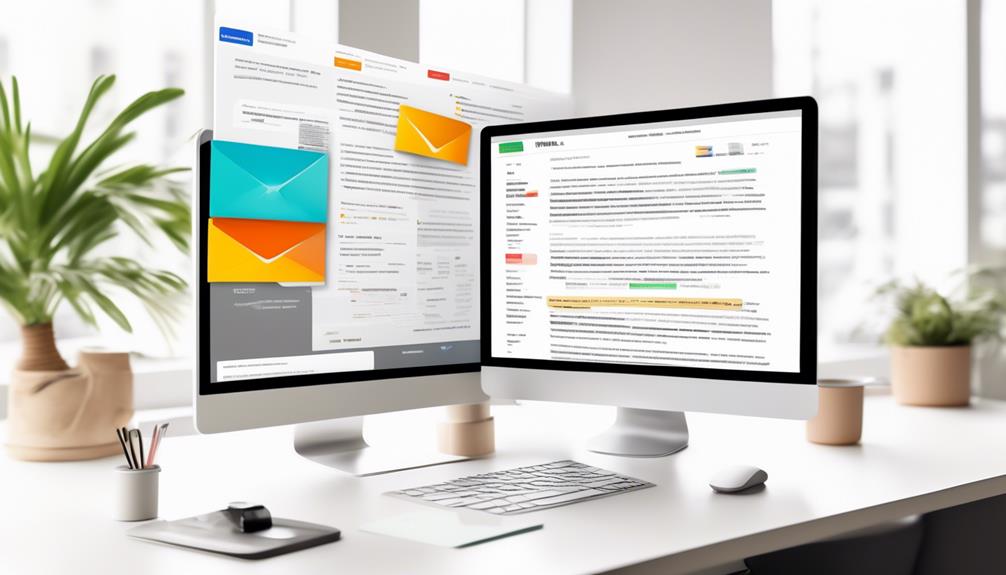
In the constantly changing world of recruitment, the importance of email subject lines in grabbing the interest of prospective candidates has grown significantly.
The efficacy of these subject lines is often underestimated, yet they hold the power to influence whether a candidate engages with the job offer or not. In an era where digital communication is king, we find ourselves pondering the impact of these seemingly innocuous lines of text.
Join us as we explore the nuances of crafting compelling subject lines and unravel the strategies behind captivating candidates from the very first point of contact.
Key Takeaways
- Effective recruitment email subject lines are crucial for capturing candidates' attention and encouraging them to engage with job offers.
- Personalization, urgency, engaging language, and continuous testing are important strategies for crafting compelling subject lines.
- Examples of compelling subject lines include personalizing with candidates' names, creating a sense of urgency, using engaging language and questions, and including the company's name for brand recognition.
- Best practices for subject lines include personalization, relevance, urgency, focusing on candidates' talents and qualifications, and aligning subject lines with recruitment goals and target candidates.
Importance of Recruitment Email Subject Lines
Recruitment email subject lines play a crucial role in capturing the attention of potential candidates and enticing them to open and engage with job offers. As recruiters, we understand the significance of crafting compelling subject lines that prompt candidates to open our emails.
The open rates of our emails depend heavily on the effectiveness of these subject lines. Therefore, it's essential to focus on creating subject lines that are personalized, relevant, and urgent to pique the interest of candidates.
Personalization helps to build rapport and connection with candidates, ultimately leading to higher open and response rates. Additionally, incorporating a clear call to action in the subject line encourages candidates to engage with the email content.
Relevant subject lines are key in helping candidates understand why the job offer is pertinent to them, increasing the likelihood of them showing interest.
By following these tips and understanding the importance of recruitment email subject lines, we can significantly improve email open rates and positively impact our recruiting efforts.
This is the ultimate guide to mastering the art of crafting effective recruitment email subject lines.
Crafting Effective Subject Lines
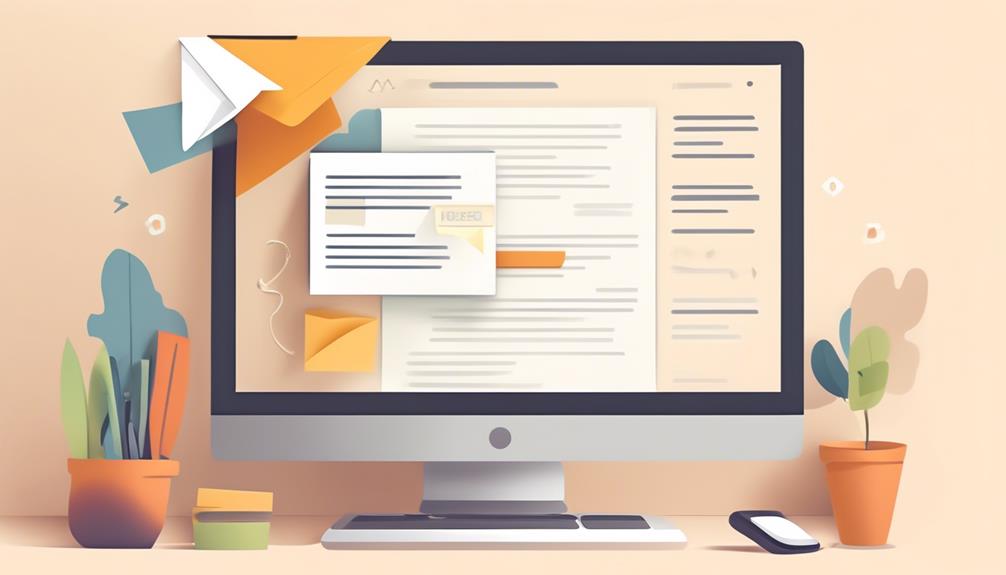
Crafting effective subject lines is a vital aspect of capturing candidates' attention and driving engagement with our recruitment emails. To ensure our subject lines are compelling and impactful, we focus on the following key strategies:
- Personalization: We know that email recipients decide whether to open an email within seconds. By personalizing subject lines with candidates' names and relevant details, we create a sense of individualized value, leading to a higher open rate.
- Creating Urgency: Best recruiting practices involve crafting subject lines that convey a sense of urgency and the immediacy of a job opportunity. This prompts candidates to take action promptly, increasing the likelihood of engagement.
- Engaging Language: Incorporating engaging language, such as using numbers or statistics, can make subject lines stand out in candidates' inboxes. This approach captures the attention of tech recruiting candidates who are inundated with numerous emails daily.
- Continuous Testing: We understand that candidates know what they want, and to optimize our approach, we continuously test and analyze subject lines. This ensures that we identify the most effective strategies for capturing candidates' attention and driving engagement with our recruitment emails.
Examples of Compelling Subject Lines

Optimizing the effectiveness of our email subject lines is essential for capturing candidates' attention and fostering engagement in our recruitment efforts. When crafting recruitment email subject lines, it's crucial to personalize them to make candidates feel valued and recognized. For example, using their first name or referencing their current job positions can significantly increase open rates. Subject lines like 'John, Exciting Opportunity at [Company Name]' create a sense of personal connection and relevance.
Another best practice is to create a sense of urgency to prompt action. Subject lines such as 'Limited Time: Apply Now for [Job Position]' compel candidates to open the email and act promptly. Engaging language and questions also pique curiosity, prompting candidates to open the email to find the answers. For instance, 'Ready for a New Challenge?' provokes curiosity and encourages candidates to open the email.
Additionally, including the company's name in the subject line helps establish brand recognition and attract candidates' interest. 'Join the [Company Name] Team: Exciting Opportunities Await!' is an example of a subject line that incorporates the company's name to capture attention.
To find the perfect recruitment email subject lines, testing and analyzing different variations is essential to identify the most effective ones and optimize open and response rates. Make sure your subject lines align with your recruitment goals and resonate with your target candidates to maximize the impact of your email campaigns.
Best Practices for Subject Lines
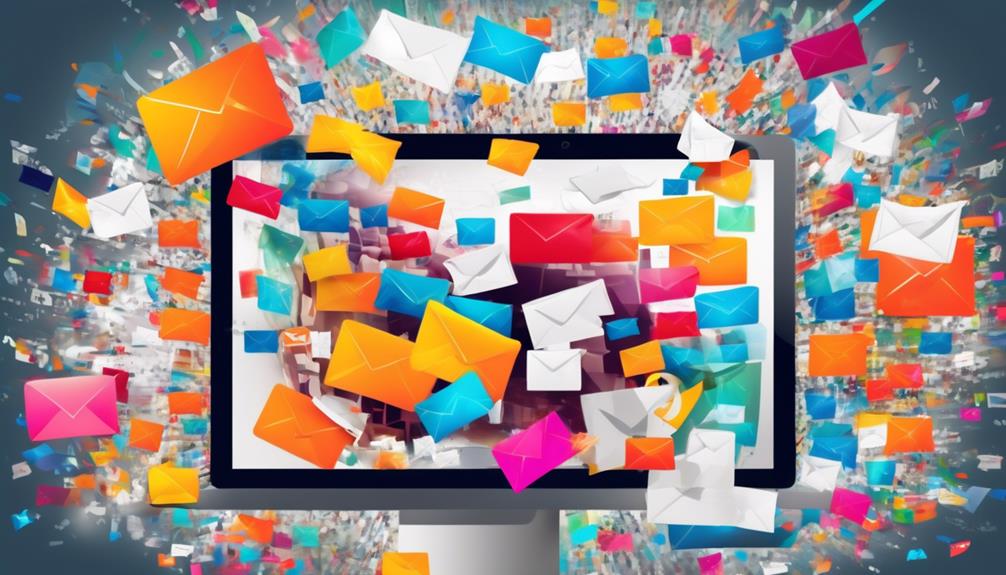
Let's enhance the effectiveness of our email subject lines by incorporating best practices that capture candidates' attention and drive engagement.
When crafting subject lines for recruitment emails, it's crucial to employ the following best practices:
- Personalization: Use candidates' first names or mention their current positions to create a sense of individualized communication.
- Relevance: Make subject lines pertinent to candidates' experience or qualifications to pique their interest and demonstrate that we're the best place to work for them.
- Urgency: Create a sense of urgency by mentioning limited time for submitting applications, emphasizing that positions are waiting to be filled.
- Focus on Talent: Highlight candidates' talents, skills, certifications, or unique qualifications in the subject line to build trust and credibility, showing that we're looking for a career match.
Personalization and Relevance in Subject Lines
We can enhance the effectiveness of our email subject lines by incorporating personalization and relevance to capture candidates' attention and drive engagement. Personalization involves addressing candidates by their first names or referencing their current positions, creating a sense of connection and familiarity. Relevance in subject lines means tailoring the content to directly align with candidates' experience or qualifications, making it more applicable and intriguing to them. When seeking to fill a developer role, mentioning the specific job title or highlighting relevant skills can significantly increase the likelihood of candidates opening the email.
| Personalization | Relevance |
|---|---|
| Mentioning candidates' first names or current positions | Tailoring content to align with candidates' experience or qualifications |
| Creating a sense of connection and familiarity | Making the content directly applicable and intriguing |
| Building trust and increasing interest in the job offer | Piquing candidates' interest and prompting them to take immediate action |
Frequently Asked Questions
What Is a Good Subject Line for an Email Recruiter?
We've found that personalized subject lines, including candidates' names and relevant qualifications, greatly increase email open rates. Using engaging language and a clear call to action can guide candidates through the next steps.
How Do You Subject a Recruitment Email?
Subjecting a recruitment email involves crafting a compelling subject line that entices candidates to open and read the message. We tailor it to appeal to their interests and needs, using personalized and relevant language.
What Is the Subject Line for a New Hire Email?
We believe the subject line for a new hire email should be engaging, personalized, and urgent to prompt action. It should highlight the candidate's qualifications and include a clear call to action for the next steps.
What Are Good Professional Subject Lines for Emails?
We craft engaging subject lines that prompt immediate action, using personalized and compelling language. Testing and analyzing our subject lines ensure better engagement and open rates, while mentioning new opportunities and the company's name creates a sense of urgency.
Conclusion
In conclusion, crafting compelling recruitment email subject lines is essential for engaging candidates and increasing the likelihood of them opening and reading job offers.
By personalizing the subject lines and making them relevant to the candidates, companies can make a strong first impression and attract top talent.
So, next time you're crafting a recruitment email, ask yourself: How can I make this subject line stand out and grab the candidate's attention?
Erik – Email, SEO, AI Expert Writer Erik is the strategist, the thinker, and the visionary. His role at Influenctor is pivotal in integrating SEO with AI-driven content strategies. With an extensive background in email marketing and a profound understanding of search engine algorithms, Erik develops innovative strategies that elevate our client’s online presence. His work ensures that our content is seen, felt, and remembered.
Email Subject Line
Best Follow up Email Subject Lines
Pique your recipients' curiosity with the best follow-up email subject lines that guarantee higher response rates – discover the secret to irresistible subject lines.
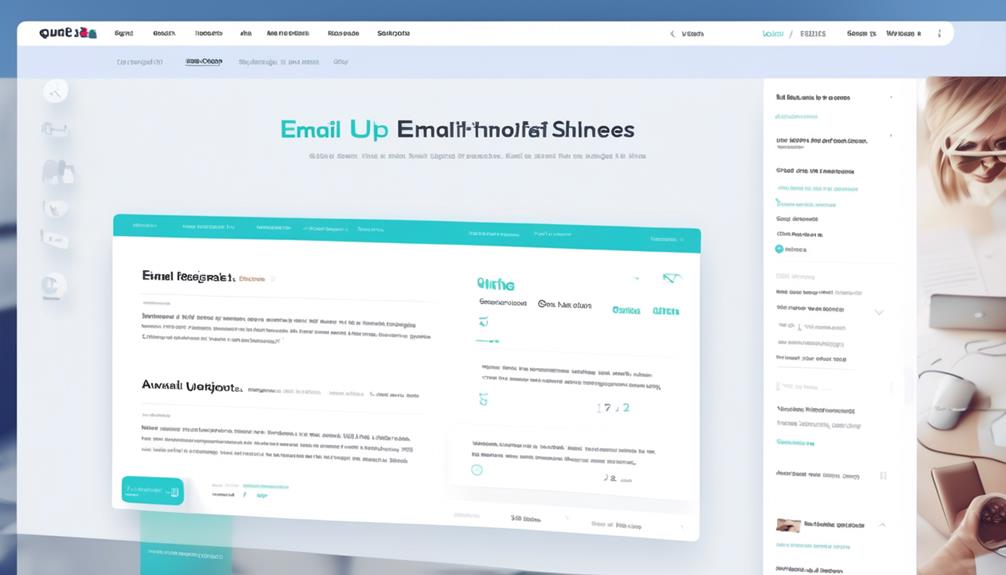
So, we’re all aware of how crucial it is to keep the conversation going, and nailing down the perfect approach can be somewhat challenging. But, what if I shared with you a straightforward method to boost your reply rates without appearing overly aggressive or needy?
Well, I've got some valuable insights on the best follow-up email subject lines that can make all the difference. Let's uncover the secrets to crafting subject lines that grab attention and compel your recipients to take action.
Key Takeaways
- Captivating subject lines are essential for increasing open rates and engaging recipients.
- Personalization adds value to the recipient and increases the chances of a response.
- Creating a sense of urgency or acknowledging a missed connection can pique curiosity and prompt action.
- Maintaining a professional tone, avoiding clickbait or spam-triggering words, and crafting a well-defined call to action are important for high reply rates.
Importance of Follow-Up Email Subject Lines
Crafting compelling subject lines for follow-up emails is essential for capturing the recipient's attention and increasing the likelihood of a positive response. In the world of email marketing, the subject line is the gatekeeper to your message. It's the first thing your recipient sees, and it can make or break the success of your follow-up email.
Effective subject lines are a critical element in increasing open rates and engaging the recipient. They serve as a tool to convey the purpose of the email and entice the recipient to open it. By mastering the art of writing effective subject lines, you can significantly increase your chances of getting a response.
It's not just about getting the email opened; it's about standing out from the crowd of emails flooding the recipient's inbox. An effective subject line can prevent your email from being marked as spam and demonstrate a customer-centric approach. Ultimately, it can lead to increased conversion rates, making it a fundamental aspect of successful email follow-up strategies.
Crafting Effective Subject Lines

Now that we understand the importance of captivating subject lines in follow-up emails, let's explore the strategies for crafting effective ones that can grab the recipient's attention and prompt a positive response.
Crafting effective email subject lines is crucial for increasing open rates and capturing the interest of email recipients. To achieve this, subject lines should be personalized, adding value to the recipient.
Keeping subject lines short and attention-grabbing can also increase the chances of getting a positive response. Acknowledging a missed connection or creating a sense of urgency in the subject line can further pique recipients' curiosity and prompt them to open the email.
It's essential to maintain a professional tone and avoid clickbait or spam-triggering words in subject lines to ensure high reply rates. A/B testing can be utilized to analyze and improve the effectiveness of subject lines, helping to ensure that follow-up emails stand out in crowded inboxes and encourage recipients to engage with the content.
Best Practices for Follow-Up Subject Lines
To maximize the impact of follow-up emails, it's essential to employ best practices when crafting compelling subject lines that captivate recipients' attention and drive engagement.
When writing a subject line, it's crucial to let the recipient know what the email is about in a clear and concise manner. This not only increases the likelihood that they'll open the email but also sets the tone for effective follow-up communication.
Incorporating a sense of urgency can also prompt action, encouraging the recipient to prioritize the email and respond promptly. A well-crafted call to action can further motivate the recipient to engage with the email, making it more likely for them to take the desired next steps.
It's important to maintain a professional tone in the subject line to convey credibility and respect. Additionally, considering the next follow-up email in the subject line can help in setting expectations and organizing the follow-up sequence effectively.
Examples of Successful Subject Lines
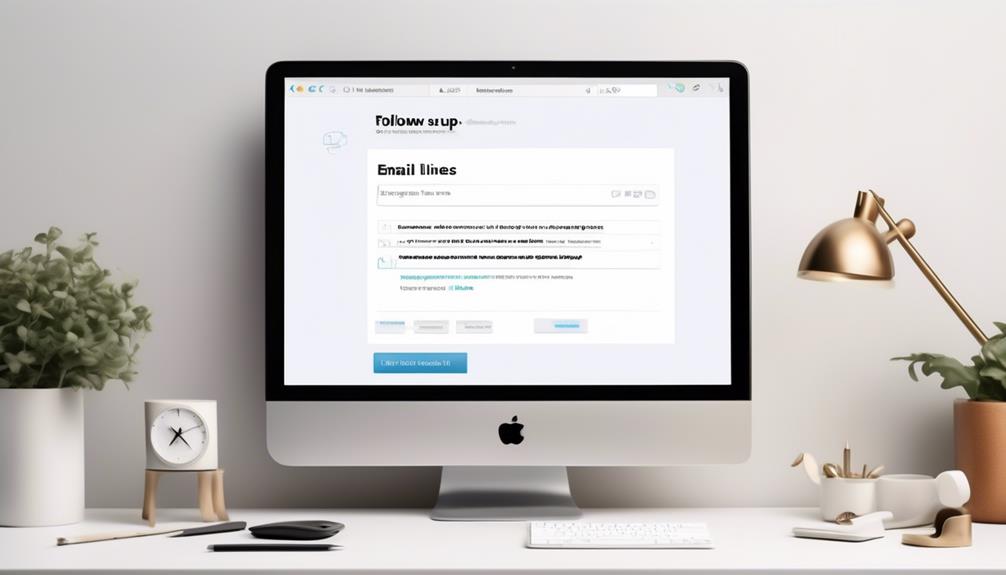
Exploring examples of successful subject lines provides valuable insights into effective email communication strategies and can inspire compelling approaches to engaging with recipients. Crafting subject lines that make your message stand out and grab your recipients' attention is essential for increasing email open rates. A well-crafted subject line matters because it is the first thing recipients see, and it can determine whether they open your email or not. Successful subject lines often create a sense of urgency, curiosity, or a mutual connection with the recipients.
Here are some examples of successful follow-up email subject lines:
| Type of Subject Line | Example Subject Line | Why It Works |
|---|---|---|
| Personalized | "Great meeting you at [Event Name]" | Establishes a personal connection |
| Curiosity-Piquing | "Guess what we have for you" | Creates intrigue and curiosity |
| Mutual Connection | "Fellow [Alma Mater] alum here" | Establishes a sense of mutual connection |
| Urgency-Inducing | "Last chance to claim your offer" | Creates a sense of urgency to take action |
These examples demonstrate how different approaches can effectively grab recipients' attention and increase the likelihood of your email being opened.
Tips for Boosting Response Rates
Highlighting the significant impact of follow-up attempts and the average number of emails received daily, we can now explore effective strategies for boosting response rates.
Crafting compelling subject lines is vital for standing out in recipients' inboxes. Personalization, relevance, and a sense of urgency are key components for achieving high open rates. In our email sequence, the first email's subject line holds immense power in determining whether it gets opened or ignored. Utilizing email templates can be helpful, but it's crucial to customize subject lines to suit each recipient.
Understanding what makes a perfect email subject line is essential for increasing response rates. We need to know the tips and tactics for creating subject lines that prompt action from the recipients. A well-thought-out subject line can significantly impact the success of our follow-up efforts.
Frequently Asked Questions
What Are Good Professional Subject Lines for Emails?
We've found that good professional subject lines for emails are concise, personalized, and value-driven. They should create urgency without being pushy. A/B testing can help gauge effectiveness, and avoiding clickbait is crucial for building trust.
What Email Subject Lines Get the Most Opens?
We've found that subject lines acknowledging missed connections, creating urgency, and personalizing content can significantly boost open rates. It's crucial to avoid clickbait and misleading lines, as they harm engagement.
What Is a Good Follow up Email?
A good follow-up email shows persistence, adds value, and respects the recipient's time. It's personalized, concise, and creates urgency when necessary. A/B testing ensures relevance and engagement. Overall, it's an essential part of effective communication.
What Is the Most Appropriate Email Subject Line?
We believe the most appropriate email subject line is one that is personalized, concise, and action-oriented. It should establish rapport, convey relevance, and prompt the recipient to engage with the email content.
Conclusion
When it comes to follow-up emails, the subject line is your golden ticket to getting noticed. It's like a shining beacon in a sea of emails, drawing the recipient in and enticing them to open your message.
So, remember to craft your subject line with care, like a skilled artist creating a masterpiece. With the right subject line, you can capture attention, drive engagement, and ultimately achieve your desired outcome.
Master the art of the follow-up subject line, and watch your responses soar.
Erik – Email, SEO, AI Expert Writer Erik is the strategist, the thinker, and the visionary. His role at Influenctor is pivotal in integrating SEO with AI-driven content strategies. With an extensive background in email marketing and a profound understanding of search engine algorithms, Erik develops innovative strategies that elevate our client’s online presence. His work ensures that our content is seen, felt, and remembered.
-

 Email Automation1 month ago
Email Automation1 month agoAutomated Email Marketing 101: A Beginner's Tutorial
-

 Email Warmup1 month ago
Email Warmup1 month agoWarm Follow-Up Email
-

 Email Design Hub2 months ago
Email Design Hub2 months ago3 Essential Tools for Email Marketing Design Success
-

 Email Marketing1 month ago
Email Marketing1 month agoWhat Is Email Marketing Advantages and Disadvantages
-

 Email Marketing1 month ago
Email Marketing1 month agoWhy Email Marketing Is Effective
-

 Email Template1 month ago
Email Template1 month agoCrafting the Perfect Book Club Invitation Email Template
-

 Search Engine Optimization1 month ago
Search Engine Optimization1 month agoSEO Checklist: Enhance Your Site’s Performance
-

 Email Marketing1 month ago
Email Marketing1 month agoDoes Email Marketing Work in 2024






















